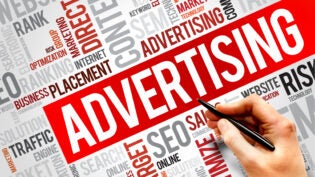
Generating a solid lead list takes a lot of time and energy; the eternal challenge is getting those leads to convert into sales. At first blush, a large email lead list represents a positive sign of business health. However, if you can’t convert the leads into paying customers/sales, then their value is greatly diminished.
Q: So, How do You Optimize Your Email Marketing?
A: Supplement it with Email Retargeting.
Before we address the specifics of how to use retargeting to convert email leads, we need to do some housekeeping. In order to implement a successful email retargeting program, it’s imperative that you have a clean email database that is segmented appropriately.
Why? Because you don’t want to waste money advertising to the wrong people or create negative sentiment.
Related Article: Ad Retargeting: It’s About Context, Relevance & Value
Here’s my recommendation for MINIMAL lead list segmentation:
- Current Prospects
- Current Clients/Customers
- Past Customers
Creating those three buckets or segments will help you avoid the major pitfalls of ad retargeting. The last thing you want to do is continue to push a pre-sales message/ad to someone who has already purchased your product. #annoying
*Keep in mind, the more granular you get with your segmentation, the better ability you have to deliver more contextual ads based on consumer preferences, behavior, demographics, or geography. Use marketing automation software to help automate this process.
How Does Email Retargeting Work?
Email retargeting is pretty simple. A pixel (a line of Javascript or code) is dropped into an email; once a recipient opens their email, that fires a trigger to drop a cookie (a form of web browser tracking mechanism) into their browser to retarget the user across the web. When the user eventually leaves their email and navigates to a different website, your creative ad will appear as a display advertisement on their webpage.
Marketers often talk about top-of-mind awareness, or the practice of staying in front of a prospect throughout their daily routine. In general, ad retargeting offers one of the best tactics to get small—but powerful—messages delivered across various digital channels with a goal of pulling the end-user back to your site and getting them to take a desired action. As a result, your brand or ad stays with them throughout the day.
Key Statistic: 77% of consumers prefer to get their marketing messages via email. Exact Target report
Specific Uses for Email Marketing
Studies suggest that users prefer getting marketing messages via email communications. As marketers, you’ve probably looked at the statistics on engagement and open rate and want to call BS.
Ad retargeting may be the answer to achieving higher conversion goals. If you’re wondering if retargeting only works for eCommerce or B2C businesses, don’t; it works for both.
While planning your next campaign strategy, it is best to understand what role your email marketing plays in the sales funnel. E-commerce and B2C companies may use email to send out promotional offers or time-sensitive deals. B2b companies with longer sales cycles, by contrast, may use it to send value-added resources such as free trials, ebooks, or case studies to narrow the length of the sales cycle.
Popular Functions of Email Marketing:
- Specific/Targeted Messages
- Upsells
- Timely/Promotional Offers
- Combats Shopping Cart Abandonment
But Wait, There’s a Problem…
S#$%, Google always finds a way to ruin the fun for marketers. Google recently made a decision to change the way that it serves up images to its email users. In short, it rendered moot the principal technique for email retargeting to Gmail users. Mind you, Google just reported that it had over 900M Gmail users.
Chances are a majority of your database leads will be opening your marketing message in Gmail, thus greatly reducing the effectiveness of your email retargeting.
And a Solution…
Where there’s a will, there’s a way. CRM retargeting is…well, it’s superior to what email retargeting once was.
CRM retargeting lets you use the data that you’ve already collected from customers or opt-ins to serve up specific targeting messages. This allows you to bridge offline and online efforts. For example, if customers give you an email address at a brick-and-mortar location, you can send them additional ads online using their email address.
The major difference between email retargeting and CRM retargeting is that you’re no longer relying on the consumer to open their email to fire a retargeting action. Because you are uploading a list to a retargeting platform, you can begin to target them immediately. Additionally, because you are using the data within your CRM, you have far greater targeting possibilities.
For those interested in taking a deeper dive, HubSpot explains about the differences between pixel-based vs. lead-based in this post.
Retargeting gives brands the ability to upsell, revive databases, and reduce sales cycles through highly segmented and contextual advertising. Think of it as an extension of your current marketing efforts that will help increase brand awareness and conversion rates.












